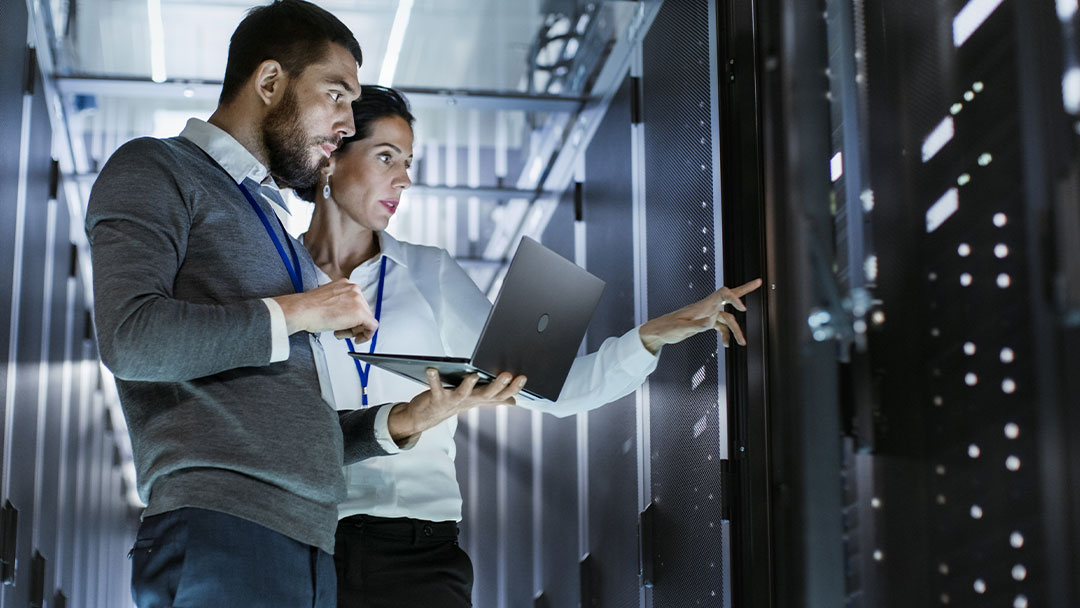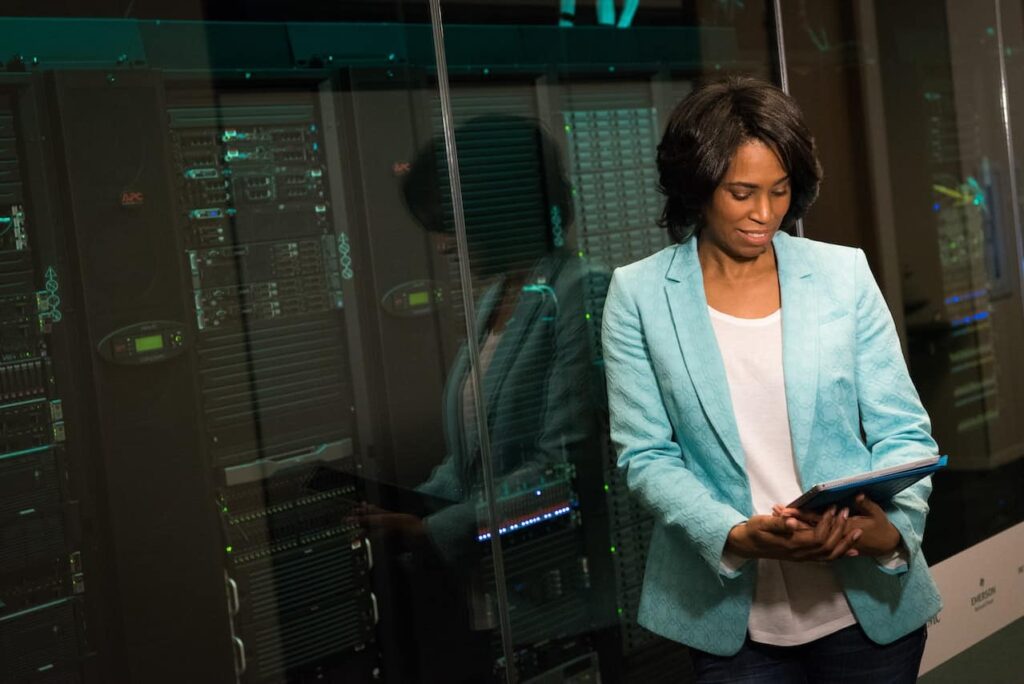Cooling your server room takes constant vigilance and strict adherence to safety measures. Without proper care, you run the risk of compromising your servers and mission-critical data. Server rooms need to be properly ventilated and temperature controlled to run efficiently and safely. But this is no small feat.
Servers require a mass amount of power, which generates heat. And without proper cooling, it can disrupt or halt operations if a server goes down. We’ll explain how to cool a server room properly and how to prepare for unexpected situations that might spike your temperatures can compromise your servers.
Why Your AC isn’t Enough to Cool a Server Room Properly
Unless you just recently built your office space and server room, your building’s current AC system is insufficient to cool your data center which can fluctuate in temperature. The main factors that render your AC system inadequate:
Challenging to Expand
Because the air conditioner is a permanent system, it is more difficult to expand when your server room grows or the server usage increases. Increasing or building up existing systems can be incredibly challenging if the building wasn’t initially designed for data center growth.
Shouldn’t Run 24/7
It is incredibly taxing on your air conditioning to run it 24/7, which is required to cool a server room. This can drive up energy costs, and your AC will run insufficiently from constant use. To mitigate this problem, you need to install a separate HVAC to control the temperature.
Can Only Regulate Temperature
Not only do server rooms need to maintain a stable environment between 68-72 degrees, but it also needs to maintain an optimal humidity level between 40-55%. If humidity isn’t kept in check, it can cause condensation that will damage servers. Unfortunately, AC units are insufficient to monitor and regulate humidity.
To assist your AC system, you’ll need to implement other cooling strategies to maintain optimal temperatures and humidity levels in your server room.
Related Link: Cooling Capacity: Everything You Need to Know
Data Center Cooling Strategies
To cool your data center properly, there are several cooling strategies you need to put in place to maintain optimal conditions:
Design Proper Airflow
First and foremost, you need to design the layout of your equipment so that the individual equipment fans are not expelling hot air into another system’s intake. To do this, your servers should be configured so that the equipment is exhausting hot air in the same direction. This is also known as a hot aisle/cold aisle where all the equipment input pulls air from the cooler aisle and outputs into a hot aisle.
Manage Airflow
To manage airflow, there are two areas you need to be concerned with:
Pulling Air Out of the Hottest Areas Behind the Racks
If all your equipment exhausts are pointing into the same aisle, then it’s going to be wicked hot behind the rack. It’s essential that this air is funneling back into the air conditioner because it is more efficient at handling the hot air. By having the air condition pull the hot air out, it can manage temperature better.
Direct Cool Air into the Equipment Intake
Another area that you need to be mindful of airflow is the equipment intake. If cool air is flowing into the intake, then the servers can run more efficiently.
Monitor Conditions with Environmental Control Equipment
To ensure your keeping your data center in an optimal climate, you’ll need to install:
- Environmental Monitors: These are temperature and humidity level sensors that should be placed strategically around the room.
- Dehumidifiers: This equipment monitors and regulates humidity levels.
- Dry Bulb Thermometer: An analog or digital thermometer that evaluates the ambient air temperature.
- Wet Bulb Thermometer: A thermometer has a wet muslin sleeve that calculates the air moisture content.
- Dew Point Temperature: A thermometer intended to evaluate whether your server room air is too saturated, and water vapor begins to condense.
Add Portable Spot Coolers
Spot coolers, or portable cooling units, can be placed on the bottom of the server rack to pull hot air from the back and blow cool air to the front of the rack. Spot coolers can also manage humidity levels by sucking the moisture out of the air.
Aside from managing both temperature and humidity, spot coolers are also very efficient, relieving the AC system’s energy costs. Another bonus to using spot coolers is relatively easy to install, maintain, and manage.
Looking for a better cooling system for your server room? Contact us to customize a data center design solution that can fit your budget.
Related Link: How to Calculate Data Center Cooling Needs
Why a Backup Cooling System is Critical
If your AC system or electricity goes down because of outages, weather, or other unforeseen disasters, then your equipment and data can become severely compromised. Creating a backup cooling solution is critical to maintaining conditions inside your server room. This redundant cooling solution could include:
- Temporary air conditioners
- Spot coolers
- Vertical HVAC systems
- Dehumidifiers
- Chiller units
To keep the room functioning, you’ll also need a backup power supply for your backup cooling system. Many server rooms have a two-layer system to guarantee redundant power:
- A large battery backup system: a short-term backup power solution.
- A large, diesel-powered generator: a longer-term solution.
By having these systems in place, your server room should be able to continue working despite any unforeseen disaster.
Designing, Installing and Monitoring Your Data Center Cooling Solution
Whether you are remodeling, expanding, or first designing your data center, you’ll want to be mindful of how you design, install, ventilate, and monitor your server room conditions. You’ll also want to build an adequate backup system should anything happen so that business-critical information and functionality remain intact.
C&C’s data center design, power, cooling, and infrastructure experts can help you build and manage an optimal data center system. Talk to us if you need help creating an efficient and scalable server room for optimal performance and safety. We customize cooling systems solutions to meet your space, demands, and budget.
Need consulting advice on how to improve your data center? Book a call with C&C for a free onsite evaluation.
Related Link: Two Methods of Estimating Data Center Energy Consumption
Last Updated on January 20, 2023 by Josh Mahan




